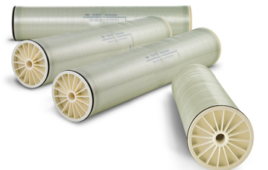|
Therapeutic proteins, which provide cutting-edge treatments of cancer,
diabetes, and countless other diseases, are among today’s most widely consumed
biopharmaceuticals. By introducing bottom-up carbohydrate engineering into
common bacterial cells, Cornell
University researchers
have discovered a way to make these drugs cheaper and safer.
A research team led by Matthew DeLisa, associate professor of chemical and
biomolecular engineering, has invented a novel method for engineering human
therapeutic glycoproteins simply and quickly using Escherichia coli (E. coli) bacteria as a platform. Their work is detailed
online in Nature Chemical Biology.
Their methods are now being commercialized through a startup company,
Glycobia Inc., which recently took up residence in Cornell’s McGovern Family
Center for Venture
Development in the Life Sciences.
Glycoproteins are proteins that are modified at specific amino acid
“acceptor” sites with complex carbohydrate structures, or
oligosaccharides—a basic human chemical reaction that’s essential to life.
That’s why specifically designed, genetically engineered glycoproteins are so
commonly used as drugs—they bind to certain protein receptor sites and, for
example, block cancer cells from multiplying. Among glycoproteins used to treat
diseases today are monoclonal antibodies and interferons.
Current manufacturing methods rely mainly on costly, time-consuming
mammalian culture cells, such as the Chinese Hamster Ovary (CHO) cell line. The
process is also susceptible to viral contamination, further driving up
production cost; in fact, in 2009 the biopharmaceutical company Genzyme
temporarily shut down its Allston, Mass., plant after such a contamination
occurred.
The Cornell research uses a bottom-up engineering method to assemble a
synthetic pathway for the simple and quick production of a glycoprotein that
forms the basis of many of today’s therapeutic protein drugs, including, for
example, the protein GCase, used in a drug that treats Gaucher’s disease. To do
so, they artificially introduced the machinery of glycosylation—the chemical
process by which proteins become glycoproteins—into E. coli cells, rather than animal cells.
The synthetic pathway they designed, which can be tailored to many amino
acid acceptor sites to make different drugs, starts with native enzymes in E. coli. Added to that was a mixture of
four enzymes taken from yeast cells, which triggered the biosynthesis of a
specific glycan (sugar structure) that resembles the core structure found in
virtually all eukaryotic glycans. A fifth enzyme from the bacterium, Campylobacter jejuni, transferred these
core glycans to pre-engineered protein acceptor sites, resulting in the desired
glycoproteins.
The researchers are now working to improve their approach that they call
“glycans by design”—using the enzyme-based protein production method
to specifically tailor sugar structures to make many different glycans and
glycoproteins.





